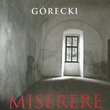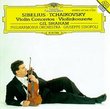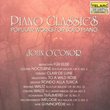| All Artists: Einojuhani Rautavaara, Eri Klas, Netherlands Radio Symphony Orchestra, Laura Mikkola Title: Rautavaara: Piano Concertos Nos. 2 and 3 Members Wishing: 1 Total Copies: 0 Label: Naxos Original Release Date: 1/1/2003 Re-Release Date: 10/21/2003 Genre: Classical Styles: Chamber Music, Forms & Genres, Concertos, Historical Periods, Classical (c.1770-1830), Modern, 20th, & 21st Century, Instruments, Keyboard Number of Discs: 1 SwapaCD Credits: 1 UPC: 747313200924 |
Search - Einojuhani Rautavaara, Eri Klas, Netherlands Radio Symphony Orchestra :: Rautavaara: Piano Concertos Nos. 2 and 3
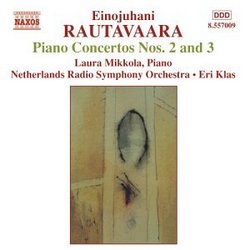 | Einojuhani Rautavaara, Eri Klas, Netherlands Radio Symphony Orchestra Rautavaara: Piano Concertos Nos. 2 and 3 Genre: Classical
The early compositions of the internationally renowned Finnish composer, Einojuhani Rautavaara, draw on the Nordic classicism of Sibelius and Nielsen, as well as the influences of Bartók, Shostakovich and folk music. ... more » |
Larger Image |
CD DetailsSynopsis
Album Description The early compositions of the internationally renowned Finnish composer, Einojuhani Rautavaara, draw on the Nordic classicism of Sibelius and Nielsen, as well as the influences of Bartók, Shostakovich and folk music. Although, during the 1960s, Rautavaara experimented with avant-garde compositional techniques, the First Piano Concerto, written in 1969 (on 8.554147), marked another significant turning point as the composer sought, in his own words, to evoke "the entire rich grandeur of the instrument." In the Second Piano Concerto of 1989, Rautavaara finds an intriguing accommodation between traditional and more radical elements. His Third Piano Concerto, written in 1998 for Vladimir Ashkenazy, is reminiscent of Bartók?s Piano Concerto No. 3 in its austere beauty, while the orchestral fantasia Isle of Bliss was inspired by a poem by the Finnish national poet Aleksis Kivi, depicting the mythical concept of the island paradise. Similarly Requested CDs
|
CD ReviewsMore Naxos Rautavaara Joshua Grasso | Oxford, OH USA | 12/06/2003 (4 out of 5 stars) "If you like Rautavaara's style, it's hard to dislike any of his compositions. Each one is so distinctly his own, announced from the very first notes or the orchestral coloration. That certainly holds up here, even though the works span a few decades. The pieces are recorded and played beautifully, and this is a wonderful disc to stumble across--I don't know of any other recording of Piano Concertos No.1 & 2 still in print.The highlight here, to me, is The Isle of Bliss, which is also available in an Ondine recording. It's a beautiful, haunting piece written at the peak of inspiration--it creates an entire world in a very short space. The piano concertos are both great, though I find them, as a whole, slightly less compelling than some of his best work--even the First Piano Concerto. The Second is a rambunctious, volatile work, full of percussion and dissonance (yet not without deeply affecting moments). It's similar in style to his Violin Concerto and Sixth Symphony. Somewhat more tame is his Third, which is a glowing, reflective piece. Like the title, it has an "autumnal" sound, and seems closer to the sound world of his Harp Concerto and Eighth Symphony. I highly recommend this work, but remove one star since it's not his absolute best work (which isn't saying much, since his less inspired work beats most composers' masterpieces). If you don't know him well, I strongly suggest the Seventh Symphony on Naxos, which features another amazing work, Angels and Visitations. Also grab the other Naxos disc with Cantus Articus, Symphony No.3, and Piano Concerto No.1 And finally, I think the Flute Concerto on Ondine coupled with the choral masterpieces On the Last Frontier is essential." Exploring the Rautavarra Piano Concertos Robin Friedman | Washington, D.C. United States | 06/29/2005 (5 out of 5 stars) "I was fascinated by the recording of Einohuhani Rautavaara's (b. 1928) first piano concerto on Naxos and was eager to hear this recording of the second and third piano concertos. The pianist, Laura Mikkola, also was featured in the first concerto, and she performs these difficult scores beautifully. She is accompanied on this CD by the Netherlands Radio Symphony Orchestra conducted by Eri Klas.
After composing his first piano concerto in 1969, Rautavaara said that he wished to capture "the entire rich grandeur of the instrument." He has done that indeed. These two concertos feature beautiful and varied writing which reveal the soul of the piano. There are lengthy passages of delicate bird-like filigree in the upper register, cascading arpeggios, passages up and down the instrument in thirds and sixths, long exciting runs, cello-like themes in the lower register of the instrument, and beautiful accompaniment to many combinations of strings, winds, brass, and percussion in the orchestra. These are outstanding contemporary pianistic works. The second piano concerto, composed in 1989, is the more challenging of the two. Rautavarra here combines his early serialistic technique with the unique romantic voice he developed in the 1970s. His combination of serialism and romanticism reminds me of the late American composer George Rochberg. Rautavarra's music, however, is more sinuous, sensual, and mystical that Rochberg's "hard romanticism". The second concerto is in three connected movements focusing on a lengthy middle movement The work opens with piano filigree and gradually grows in intensity to include swirling runs and angry chords. The middle movement opens with a slow, blusey piano solo, followed by a deliberate walking passage for the instrument. The movement again deepens as it progresses and features percussion and trumpet calls accompaning passionate runs and chords in the piano. The finale recalls the opening movement as it begins with filigree, proceeds to a passage featuring piano clusters and runs, and then fades away. This is a challenging and rewarding work. Rautavaara wrote his third piano concerto in 1999 for Vladimir Ashkenazy. It is a much more melodic, accessible piece with little in the way of serialism. The piano writing again predominates as the music alternates moments of quiet shimmering reflection with sections of virtuosity and passion. This work is also in three movements with a climactic and extended middle movement. The work opens with a slow theme in the lower strings. The piano part varies from big chords, to running figures accompaning the orchestra, to lyrical melodic lines. The second movement opens with the piano playing chords against a growling background in the lower strings. The music assumes a singing character followed by a more dramatic section. The finale, marked "Energico" opens with a percussive passage for the piano followed by a reflective passage with long runs for the soloist and a return of the energetic section with huge chords for the piano before a fade-away close. This work, nicknamed the "Gift of Dreams" will have an immediate appeal even to listeners who may have hesitations about passages of serialism in the second concerto. The CD also includes a short orchestral work, "Isle of Bliss" (1996) inspired by the work of Finnish poet Alexis Kivi (1834-1872). Sibelius also set the work of Kivi and Rautavaara has composed an opera based on his life. This is a sensuous swaying work in which a lyrical opening is succeed by a variety of dramatic passages for wind soloists and percussion before the idylic opening material returns. This is a romantic, luscious score. This CD offers the opportunity to hear unique music by a composer who has rightfully become regarded as a modern master. " |

 Track Listings (7) - Disc #1
Track Listings (7) - Disc #1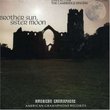
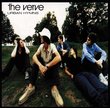
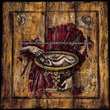
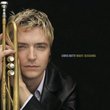
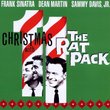
![Across The Universe [Deluxe Edition]](https://nationalbookswap.com/cd//m/51/1251/1241251.jpg)
